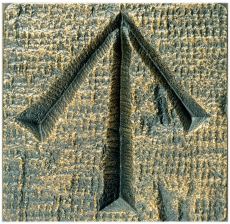Convict Database
The Convict Trail Project Convict database represents the work of hundreds of volunteers who have spent a considerable amount of time researching the convicts listed and recording as much detail that is available in the records.
Details include the arrival ships and dates, work parties and dates related to the Convict Gangs and Bridge Parties along the Great North Road can be found. We have found records for 1,352 convicts.
Details include the arrival ships and dates, work parties and dates related to the Convict Gangs and Bridge Parties along the Great North Road can be found. We have found records for 1,352 convicts.
Convict Details Database
This detailed database is searchable by any date or other text. Using the small grey arrows next to the headings, lists of convicts can be easily sorted.
Background
Hundreds of people have been involved in researching the background of the convicts who built the Great North Road. The aim of this research has been to “put the flesh on the bones” of the men who built the Great North Road. Were they unskilled and unwilling labourers, or perhaps men who spent a long time working on the Road had valuable skills such as stonemasonry, carpentry and the like? Were they addicted to a life of crime, or did they reform and lead normal productive lives after their sentence in an Iron Gang expired? We are currently working on bringing this information together, by finding out as much as we can about the individual men who toiled to build this great and enduring engineering masterpiece.
Sources
Several sources of information survive relating to people who worked on the Great North Road in the 1820s and 30s. The main ones are the Census of NSW taken in November 1828, a series of Road Gang Reports, correspondence held by NSW State Records, and escapees from gangs listed in the Sydney Gazette. The Road Gang Reports consist of Surveyors’ reports, and weekly and monthly returns which date from between 1827 and December 1830. Although a number of the Weekly Reports have survived, they do not list the names of all the men in the gangs, although they often name men who have been transferred, or taken to hospital. The only monthly reports which have survived are those of May 1830, and these list names of convicts in each gang, movement of men between gangs, punishments inflicted, occupation within the gang, and transfers to hospital etc. These documents provide a wealth of useful information.
Unfortunately records do not exist for many of the road-building years. We know it is likely there are several hundred men whose names we will never know. In Feburary 1829, Governor Darling ordered all convicts being returned from assignment to settlers as unsuitable were to be forwarded immediately to the nearest Road Party where they were to work for six months. As soon as the six months period had passed they were to be reassigned.
Unfortunately records do not exist for many of the road-building years. We know it is likely there are several hundred men whose names we will never know. In Feburary 1829, Governor Darling ordered all convicts being returned from assignment to settlers as unsuitable were to be forwarded immediately to the nearest Road Party where they were to work for six months. As soon as the six months period had passed they were to be reassigned.
CTP Research
Hundreds of volunteers have spent a considerable amount of time researching the convicts listed, and finding out as much detail as appears available in the records. If you have additional information on any of the convicts listed, or information about a convict who worked on the Road who is not listed, we would love you to share it with us.


